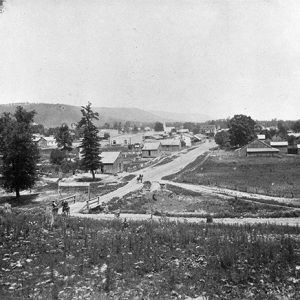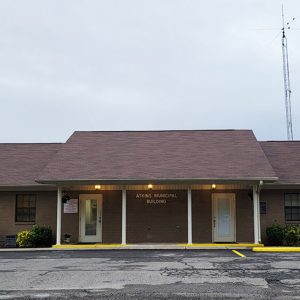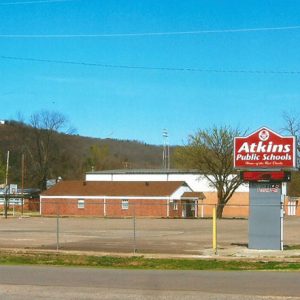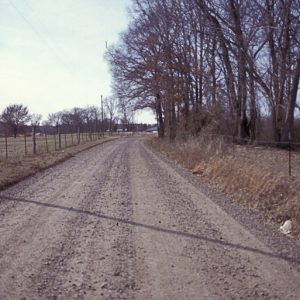calsfoundation@cals.org
Atkins (Pope County)
| Latitude and Longitude: | 35º14’47″N 092º56’12″W |
| Elevation: | 364 feet |
| Area: | 6.13 square miles (2020 Census) |
| Population: | 2,859 (2020 Census) |
| Incorporation Date: | November 3, 1876 |
Historical Population as per the U.S. Census:
|
1810 |
1820 |
1830 |
1840 |
1850 |
1860 |
1870 |
1880 |
1890 |
1900 |
|
– |
– |
– |
– |
– |
– |
– |
519 |
660 |
745 |
|
1910 |
1920 |
1930 |
1940 |
1950 |
1960 |
1970 |
1980 |
1990 |
2000 |
|
1,258 |
1,529 |
1,364 |
1,322 |
1,291 |
1,391 |
2,015 |
3,002 |
2,834 |
2,878 |
|
2010 |
2020 |
|
|
|
|
|
|
|
|
|
3,016 |
2,859 |
|
|
|
|
|
|
|
|
Atkins has long been identified as the pickle capital of Arkansas, although the pickle industry is only a part of its heritage now. The city grew up along the railroad, served as a center for river traffic, and is now situated along a major interstate. Nearby Lake Atkins is a popular fishing destination.
Reconstruction through the Gilded Age
Following the Civil War, Arkansas underwent a brief period of industrialization as capitalists, mostly from the North, took advantage of the opportunities to foster commercial growth in the devastated Southern states. One of these ventures was the Little Rock and Fort Smith Railroad. As the surveyed route followed the northern side of the Arkansas River from Little Rock (Pulaski County) toward points westward, funds ran out at Perry Station (Pope County), which was about four miles west of present-day Blackwell (Conway County). A Boston, Massachusetts, businessman named Elisha Atkins invested enough money to continue construction in 1872; a town was platted at the next major crossroads and christened Atkins.
Benjamin Towler Embry built the first home in Atkins, which is still inhabited, in 1872. A year later, Ephraim Alexander Darr established the first business in the new town when he opened a general store, fronting the south side of the tracks. Appointed as the first postmaster in 1873, Darr also operated an informal bank, where he kept people’s money in his vault, until 1895, when he and other local businessmen founded the Bank of Atkins, which has evolved into a branch of Liberty Bank. In the last quarter of the nineteenth century, many people moved to Atkins from the once prosperous antebellum town of Galley Rock (Pope County), also known as Galla Rock, which sat seven miles southwest of Atkins on the northern banks of the Arkansas River.
After Atkins had approximately 300 residents, D. M. Mourning and Ben T. Embry petitioned for incorporation. Atkins was incorporated on November 3, 1876, with James Franklin Darr elected as the first mayor and Mourning serving as the first city clerk. The railroad also lured a number of German immigrants who moved to the area in the 1870s and 1880s, organizing the Catholic church and adding a sizeable number of skilled laborers, craftsmen, and businessmen to the population. In November 1894, George L. Parker established the Atkins Chronicle, a weekly newspaper. It has operated continuously, making it the oldest business in town. Atkins developed into a trade center and a cotton market for an area including parts of Pope, Searcy, Van Buren, and Conway counties, as well as northeastern Yell County, where people had access to two ferries on the Arkansas River. Atkins was twice considered as a site for a county seat, once in 1887 and again in 1911, but voters rejected the measures.
In 1897, Atkins was the location of a race war. Unlike similar incidents, in this case the African Americans involved were able to defend themselves and resist arrest.
Early Twentieth Century
After growing through the first quarter of the twentieth century, Atkins suffered some economic setbacks. Following an extremely wet winter and spring, the Flood of 1927 struck in April and May, depositing as much as four feet of sand in the Arkansas River bottoms and forcing some of the small farmers to abandon their land. That same year, Governor John Martineau launched his ambitious plan to improve Arkansas’s roadways with a modern highway system. Although prominent local citizens promoted a bridge across the Arkansas River southwest of Atkins, the Arkansas Highway Commission opted for the nearly completed Highway 7 bridge between Dardanelle (Yell County) and Russellville (Pope County). Within a generation, both ferries operating on the river southwest of Atkins ceased to exist, all but severing the town’s ties to the Arkansas River.
The Drought of 1930–31 hit Arkansas hard, given the area’s dependency on agriculture. Several families in and around Atkins faced the threat of starvation, and the Red Cross responded twice in early 1931, delivering food, clothes, and other necessities to those in need. There were signs of progress, however. Road crews paved Highway 64 in the spring of 1931, making it the first paved road in town. After the New Deal came into effect, the Works Progress Administration (WPA) sponsored five projects in Atkins, building the legion hall, the city jail, the waterworks pump house, and a gymnasium and agriculture building for the school.
World War II through the Modern Era
In 1945, the Goldsmith Pickle Company invested $75,000 to build a pickle plant in town; townspeople raised an additional $15,000 to build and equip the plant. What became the Atkins Pickle Company sustained the local economy for more than half a century. The poultry industry has played a role as well. Many people around town built broiler houses to serve a number of poultry-processing plants, one of which went into operation in the vacant pickle plant in 2004.
Atkins schools desegregated in 1964 after the high school in Morrilton (Conway County) to which African American students had been bussed raised its tuition rates.
Interstate 40 added vitality to Atkins when the section of the interstate through Pope County opened in September 1968, giving Atkins access where the thoroughfare traverses State Highway 105. Since then, the business district has drifted northward as a number of local businesses relocated and a few nationally known franchises moved in.
On the afternoon of February 5, 2008, an F-4 tornado ripped a path a quarter of a mile wide through the southern and eastern edges of Atkins, killing five residents of Atkins, as well as two more in Conway County who had ties to Atkins, and injuring approximately twenty in Atkins. (The total toll in Arkansas was twelve dead and at least 190 injured.) With wind speeds between 180 and 200 miles per hour, the tornado destroyed nearly forty homes, many businesses, and one church, and damaged many other structures. The Chronicle called it the worst natural disaster ever to hit Atkins, but with the assistance of volunteers and various agencies, the town has been steadily recovering.
Education
The school system is almost as old as the town. A two-story schoolhouse was built a block west of the business district in 1875 to educate the local youth through the eighth grade. The district organized a high school in 1893. Neil H. Bell modernized the high school in the 1920s and 1930s, offering courses in business, home economics, and agriculture. In August 1999, students, teachers, and staff moved into a new high school, which was funded by a voter-approved bond measure, and voters supported a millage increase in 2008 to construct an elementary and middle school complex, slated to open in 2010.
Attractions
In 1956, Lake Atkins was created from Galla and Horsehead creeks as a recreation area, covering 752 acres and offering fishermen an abundance of bream, crappie, catfish, and largemouth bass.
Picklefest, first observed in 1992, celebrates the pickle heritage of Atkins annually on the third weekend in May.
Famous Residents
Ellis Kinder, a major league baseball pitcher who spent most of his career with the Boston Red Sox, was born in Atkins in 1914. Legendary high school football coach Wilson D. Matthews was born in Atkins in 1921. Author and actress Norris Church Mailer (born Barbara Jean Davis) grew up in Atkins.
For additional information:
Bell, Neil H. “The Town of Atkins.” Pope County Historical Association Quarterly 1 (December 1966): 6–11.
Nichols, Juanita Austin. A History of the City of Atkins, Arkansas, from the Files of the Atkins Chronicle. Atkins, AR: Juanita A. Nichols, 1967.
Stroud, John. A Heart within a Valley. Atkins, AR: Atkins Centennial Bicentennial Committee, 1976.
Anthony DeVore
Atkins, Arkansas
































Comments
No comments on this entry yet.